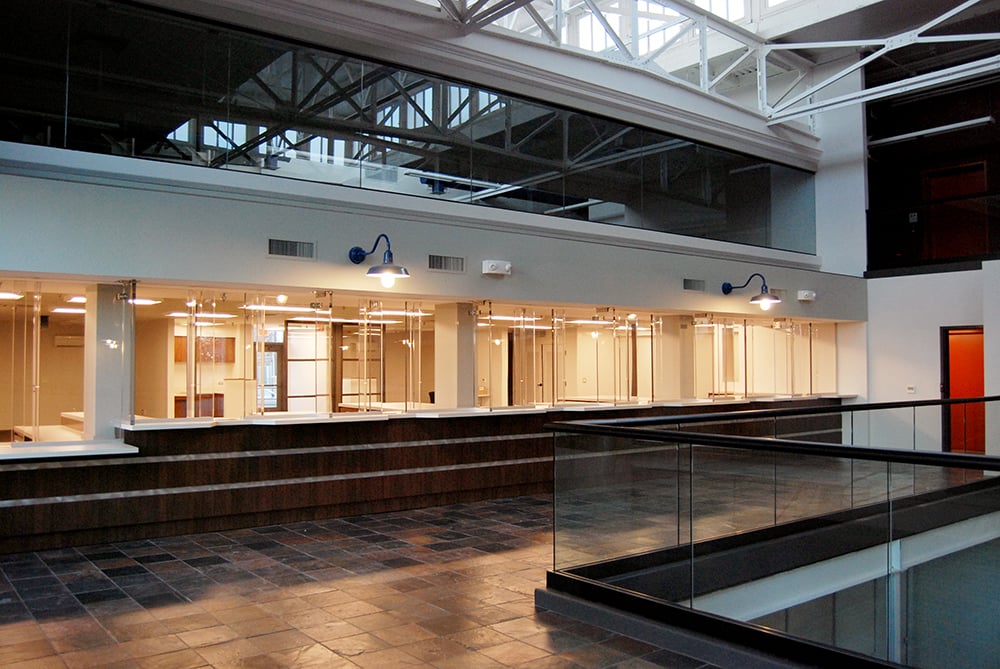City officials are increasingly focused on transparency in local government, encouraging citizen engagement with “human focused” services and processes. However to some, this openness can seem at odds with security. While citizens expect a certain amount of security infrastructure in a courthouse or police station—including both secure reception areas and actual security checkpoints—city managers often worry that community members will be put off by seeing security measures implemented in county clerk offices, tax offices, bill pay stations, and other reception areas. It is possible to strike a perfect balance between safety and communication in municipal offices.
The team at Total Security Solutions believes that when approached thoughtfully, you can design and install a bullet resistant barrier system that actually increases citizen engagement.
Municipal Offices Need Comprehensive Security Solutions
Total Security Solutions CEO Jim Richards has decades of experience securing city and county offices and payment centers. In recent years he’s seen a steady uptick in demand for custom, high-function municipal barrier systems:
“Obviously, municipal services have to be accessible to the public. Unfortunately, that often means that public employees are sitting there wide open. That’s becoming more and more of a concern. Yes, they’re concerned with an armed threat—who isn’t?—but for cities there’s a simple matter of workers getting harassed. That’s concern enough. Someone comes in to pay a tax bill, starts complaining about taxes, steadily gets worked up. It can be really terrifying.”
Holly Eades, who is responsible for electricity bill payment offices in Kentucky, agrees:
“When a big man is standing at the counter, screaming and cussing at a female customer service rep who’s five-foot-four, there’s something wrong with him…You just don’t know what’s going to happen. Just the sense of security the staff feels [with a ballistic barrier in place]. This feels ten times better.”
Staff are not the only ones frightened or disturbed when disgruntled visitors lose their temper. Community members paying their bills or running a few errands before getting on with their day often witness these events.
Holly Eades noted that, after bullet resistant barriers were installed in their payment centers, a customer remarked: “You know, y’all should have done that a long time ago.”
Constantly assessing the threat level of an agitated customer takes a toll on municipal workers and, over time, erodes job satisfaction as well as customer service. Jim Richards has often noted that, in a municipal setting: “It’s not like there’s money involved; city managers are concerned about their people. Your people are at risk, and so is your relationship with the community. More than anything, a bullet proof system is an effective deterrent to violence of all sorts. Just the presence of the system itself prevents escalation.”
Bullet Proof Barriers Improving Accessibility
Naturally, some city managers express initial concern that a bullet resistant barrier system is going to damage the atmosphere of their municipal offices. However, in an age when “community policing” is vital, fortress-like police stations must become a thing of the past.
While it might sound strange, a well-designed bulletproof barrier system can actually enhance accessibility and communications with the public. For example, the Crestview (Florida) Police Department found that renovating their facility to include a bulletproof barrier increased opportunities for citizen engagement. Previously, due to security concerns, the police station was locked after hours and on weekends, and citizens could only interact with officers by intercom system or phone. Now residents pass through a never-locked door into a secure lobby, where they are greeted faced-to-face by Crestview PD communications officers shielded with a bullet resistant window.
In Jim’s experience, many city and county workers agree that a horizontal slider window system is an ideal solution for municipal offices. “It allows you to be really responsive to the perceived threat level,” Jim explained. “If someone walks up and you’re having a good conversation with them, you can open up that slider to facilitate passing documents or whatever. But if something seems a little off or that visitor is getting riled, you can leave the slider in place, and effectively prevent anything from escalating.”


